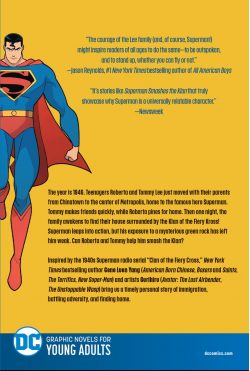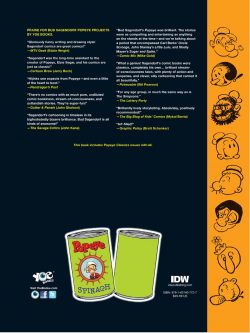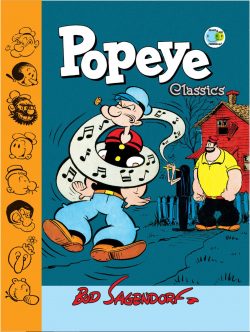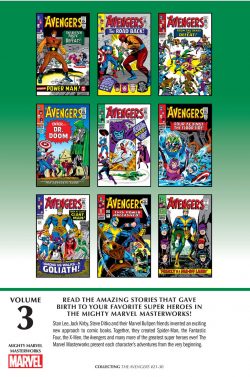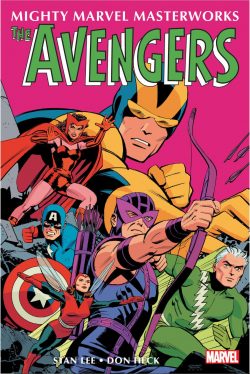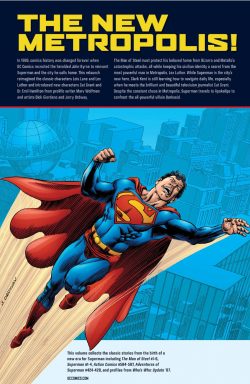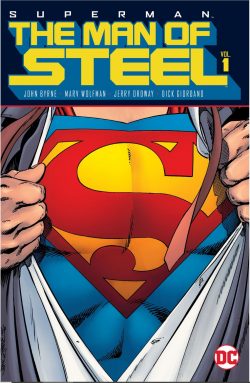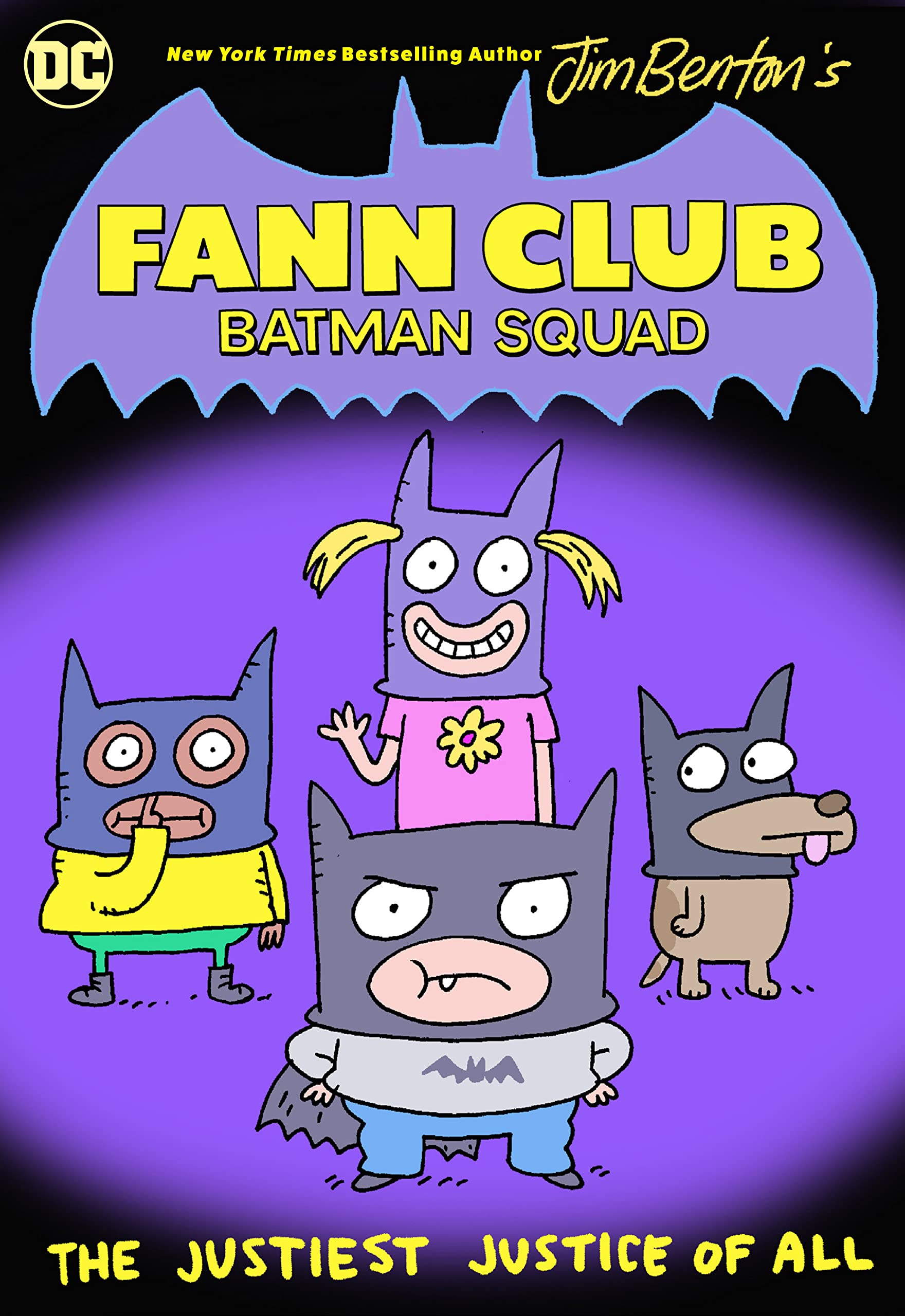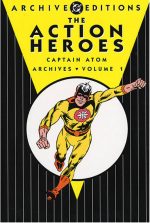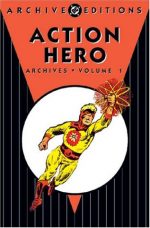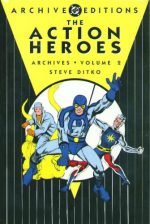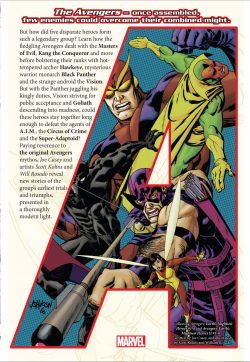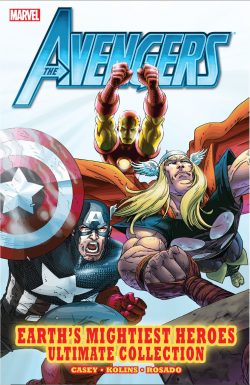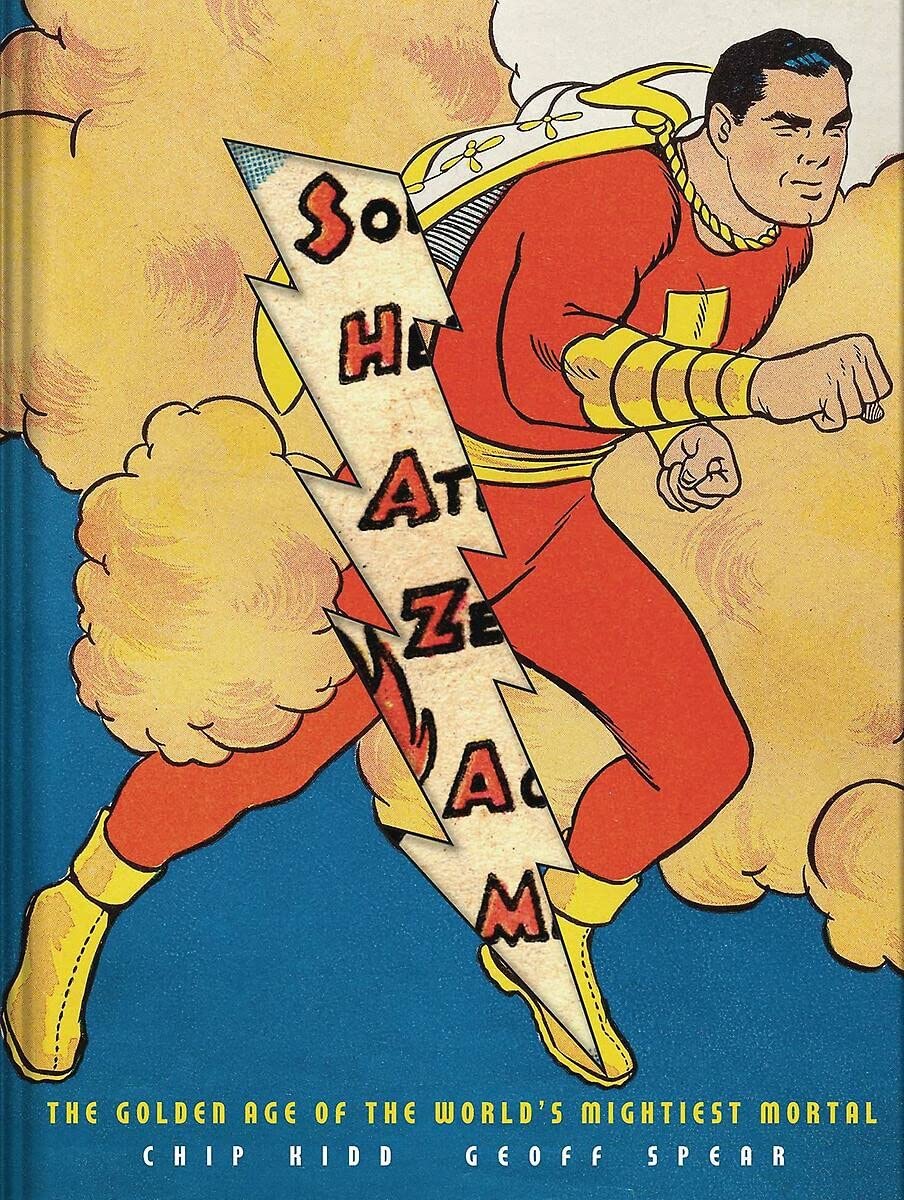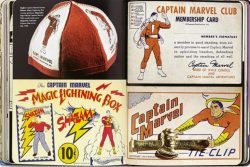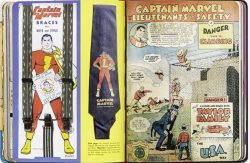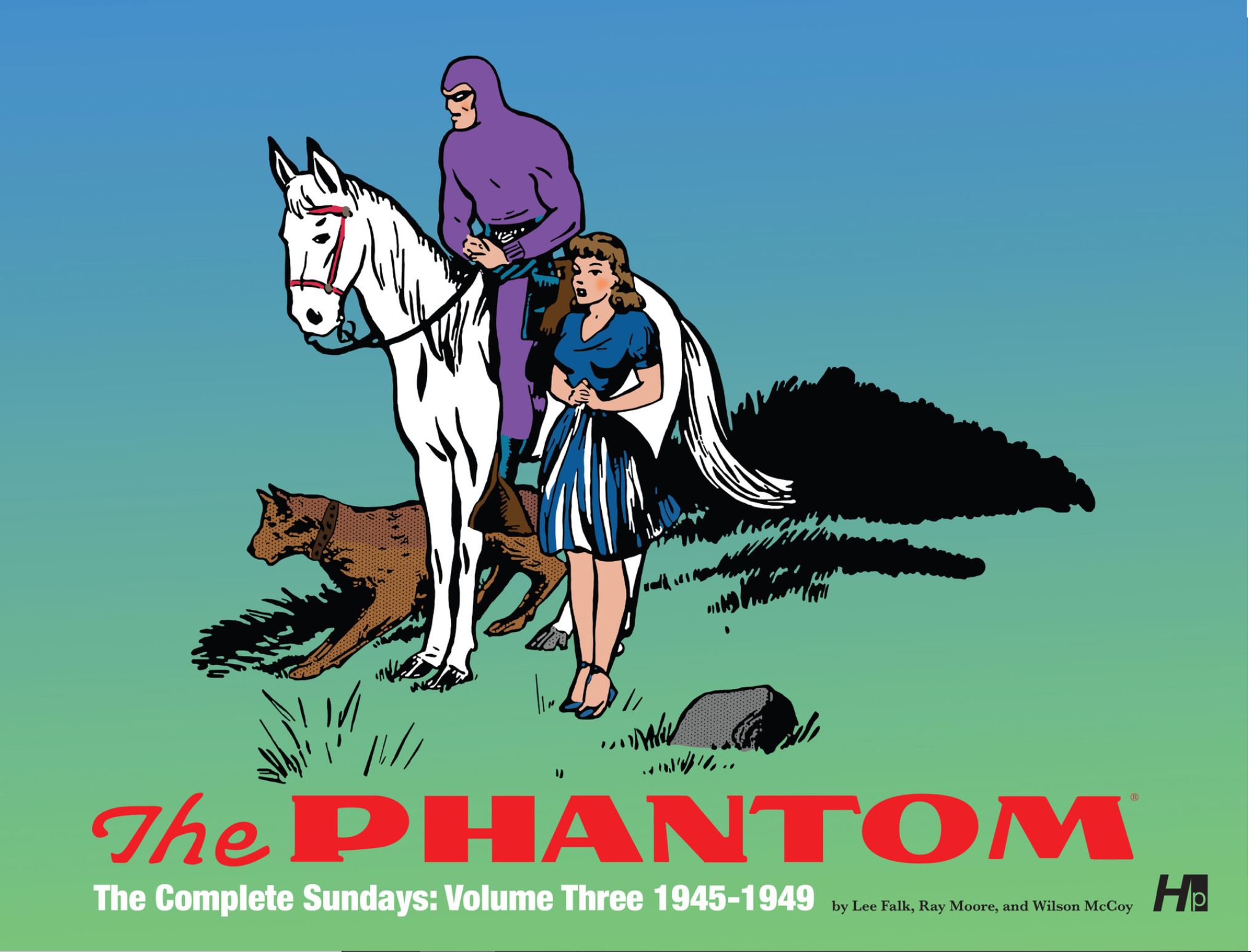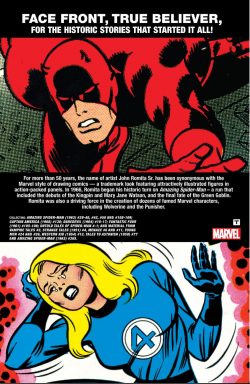
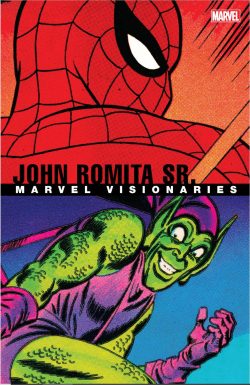
By John Romita Sr., with Stan Lee, Roger Stern & various (MARVEL)
ISBN: 978-1-3029-1806-4 (TPB/Digital edition)
We lost one of last giants of the industry this week when John Romita died on Monday. He was 93 and his work is inextricably woven into the Marvel canon: permeating and supporting the entire company’s output from top to tail and from the Sixties to right now… and even before the beginning of the House of Ideas actually began.
One of the industry’s most polished stylists and a true cornerstone of the Marvel Comics phenomenon, the elder John Romita began his comics career in the late 1940s (ghosting for other artists) before striking out under his own colours. eventually illustrating horror and other anthology tales for Stan Lee at Timely/Atlas.
John Victor Romita was born and bred in Brooklyn, entering the world on January 24th 1930. From Brooklyn Junior High School he moved to the famed Manhattan School of Industrial Art, graduating in 1947. After spending six months creating a medical exhibit for Manhattan General Hospital he moved into comics, in 1949, with work for Famous Funnies. A “day job” working with Forbes Lithograph was abandoned when a friend found him inking and ghosting assignments, until he was drafted in 1951. Showing his portfolio to a US army art director, after boot camp at Fort Dix New Jersey, Romita was promoted to corporal, stationed on Governors Island in New York Bay doing recruitment posters and allowed to live off-base… in Brooklyn. During that period he started doing the rounds and struck up a freelancing acquaintance with Stan Lee at Atlas Comics…
He illustrated horror, science fiction, war stories, westerns, Waku, Prince of the Bantu (in Jungle Tales), a fine run of cowboy adventures starring The Western Kid and 1954’s abortive revival of Captain America, and more, before an industry implosion derailed his – and many other – budding careers. Romita eventually found himself trapped in DC’s romance comics division – a job he hated – before making the reluctant jump again to the resurgent House of Ideas in 1965. As well as steering the career of the wallcrawler and so many other Marvel stars, his greatest influence was felt when he became Art Director in 197. He had a definitive hand in creating or shaping many key characters, such as Mary Jane Watson, Peggy Carter, The Kingpin, The Punisher, Luke Cage, Wolverine, Satana ad infinitum.
This celebratory volume from 2019 re-presents Amazing Spider-Man #39, 40, 42, 50, 108, 109, 365; Captain America & The Falcon #138; Daredevil #16-17; Fantastic Four #105-106; Untold Tales Of Spider-Man #-1; Vampire Tales #2; and material from Strange Tales #4; Menace #6, #11; Young Men #24, 26; Western Kid 12; Tales To Astonish #77; Tales Of Suspense #77 spanning cover-dates December 1951 to July 1997. It opens with a loving Introduction from John Romita Jr., sharing the golden days and anecdotal insights on the “family business”. Not only the second son but also his mother Virginia Romita were key Marvel employees: she was the highly efficient and utterly adored company Traffic Manager for decades.
A chronological cavalcade of wonders begins with official first Marvel masterwork ‘It!’. Possibly scripted by Lee and taken from Strange Tales #4 (December 1951), we share a moment of sheer terror as an alien presence tales over the newest member of a typical suburban family…
Next is verifiable Lee & Romita shocker ‘Flying Saucer!’ (Menace #6, August 1953) and a sneaky invasion attack preceding the first Romita superhero saga as seen in Young Men #24, December 1953.
In the mid-1950s Atlas tried to revive their Timely-era “Big Three” (and super-hero comics in general) on the back of a putative Sub-Mariner television series intended to cash in on the success of The Adventures of Superman show. This led to some impressively creative comics, but no appreciable results or rival in costumed dramas.
Eschewing here the Human Torch and Sub-Mariner segments – and with additional art from Mort Lawrence – ‘Captain America: Back From the Dead’ features a communist Red Skull attacking the UN, with school teacher Steve Rogers and top student Bucky coming out of retirement to tackle the crisis. The Star-Spangled Avenger gets another bite of the cherry in ‘Captain America Turns Traitor’ (Young Men Comics #26, March 1954) with guest shots for Subby and the Torch as the Sentinel of Liberty apparently goes from True Blue to a deadly shade of Red…
Latterly reimagined as one of the modern Agents of Atlas, ‘I, the Robot!’ began as a deadly threat to humanity in Menace #11, and is followed here by a yarn from Romita’s first residency as the wandering hero Tex Dawson and his dauntless dog Lightning and super steed Whirlwind survive sudden stampedes and tackle vile horse butchering killers in a tale from his own eponymous title (Western Kid #12, October 1956)…
Atlas collapsed soon after, due to market conditions when a disastrous distribution decision resulted in their output being reduced to 16 titles per month, distributed by arch rival National Comics/DC. Under those harsh conditions the Marvel revolution started small but soon snowballed, drawing Romita back from ad work and drawing romances for DC.
Romita’s return began with inking and a few short pencilling jobs for the little powerhouse publisher’s split books. Tales To Astonish #77 revealed ‘Bruce Banner is the Hulk!’ (March 1966, written by Lee, laid out by Jack Kirby and finished by the returning prodigal) with the gamma goliath trapped in the future and battling the Asgardian Executioner, whilst in his home era, Rick Jones is pressured into revealing his awful secret…
The Captain America story for May 1966’s Tales of Suspense # 77 added inker Frank Giacoia/Frank Ray to the creative mix for ‘If a Hostage Should Die!’: recounting a moment from the hero’s wartime exploits with a woman he loved and lost. These days we know her as Captain Peggy Carter…
After a brief stint in his preferred role as inker, Romita took over illustrating Daredevil with #12, following a stunning run by Wally Wood & Bob Powell. Initially Kirby provided page layouts to help Romita assimilate the style and pacing of Marvel tales, but soon “Jazzy Johnny” was in full control of his pages. He drew DD until #19, by which time he had been handed the assignment of a lifetime… The Amazing Spider-Man!
A backdoor pilot for that jump came in Daredevil #16-17 (May and June 1996) with ‘Enter… Spider-Man’ wherein criminal mastermind Masked Marauder manipulates the amazing arachnid into attacking the Man Without Fear. The schemer had big plans, the first of which was having DD and the wallcrawler kill each other, but after Spidey almost exposes Matt Murdock’s secret in ‘None are so Blind!’ they mend fences and go after the real foe…
By 1966 Stan Lee and Steve Ditko could no longer work together on their greatest creation. After increasingly fraught months Ditko resigned, leaving Marvel’s second best-selling title without an illustrator. Nervous new guy Romita was handed the ball and told to run. ‘How Green Was My Goblin!’ and ‘Spidey Saves the Day!’ – “Featuring the End of the Green Goblin!” – as it so dubiously proclaimed) was the climactic battle fans had been clamouring for since the viridian villain’s debut. It didn’t disappoint – and still doesn’t today.
Reprinted from issues #39 and 40 (August & September 1966 and inked by old DC colleague Mike Esposito as “Mickey Demeo”), this remains one of the best Spider-Man yarns ever, and heralded a run of classic sagas from the Lee/Romita team that actually saw sales rise, even after the departure of the seemingly irreplaceable Ditko. If you need further convincing, it sees the villain learn Peter Parker’s identity, capture and torture our hero and share his own origins before falling in the first of many final clashes…
Amazing Spider-Man #42 heralded ‘The Birth of a Super-Hero!’, with John Jameson (Jonah’s astronaut son) mutated by space-spores and going on a Manhattan rampage. It’s a solid, entertaining yarn that is only really remembered for the last panel of the final page.
Mary Jane Watson had been a running gag in the series for years: a prospective blind-date arranged by Aunt May who Peter had avoided – and Ditko skilfully never depicted – for the duration of time that our hero had been involved with Betty Brant, Liz Allen, and latterly Gwen Stacy.
Now, in that last frame the gobsmacked young man finally realises that for years he’s been ducking the “hottest chick in New York”! I’m sure we all know how MJ has built her place in the Marvel Universe…
Issue #50 (July 1967) featured the debut of one of Marvel’s greatest villains in the first chapter of a 3-part yarn that saw the first stirrings of romance between Parker and Gwen, the death of a cast regular, and re-established the webslinger’s war on cheap thugs and common criminals. Here it all begins with a crisis of conscience that compels him to quit in ‘Spider-Man No More!’
Romita was clearly considered a safe pair of hands and “go-to-guy” by Stan Lee. When Jack Kirby left to create his incredible Fourth World for DC, Romita was handed the company’s other flagship title – in the middle of an on-going storyline. Here we focus on Fantastic Four #105-106 (December 1970 and January 1971 and both inked with angular, brittle brilliance by John Verpoorten). and ‘The Monster’s Secret’.
Scripted by Lee, they comprise a low-key yet extremely effective suspense thriller played against a resuming subplot of Johnny Storm’s failing romance. When his Inhuman girlfriend Crystal is taken ill – preparatory to writing her out of the series – Reed Richards’ diligent examination reveals a potential method of curing the misshapen Thing of his rocky curse.
Tragically, as Ben Grimm is prepped for the radical process in ‘The Monster in the Streets!’ a mysterious energy-beast begins tearing up Manhattan. By the time ‘The Monster’s Secret!’ is exposed, the team strongman is almost dead and Crystal is gone… seemingly forever.
Romita briefly and regularly returned to the Star-Spangled Avenger in the 1970s and June 1971’s Captain America & The Falcon #138 reveals how ‘It Happens in Harlem!’ sporting a full art job by Romita, Lee’s tale sees new hero The Falcon foolishly try to prove himself by capturing the outlaw Spider-Man, only to be himself kidnapped by gang lord Stoneface. Cue a spectacular three-way team up and just desserts all round…
The Amazing Spider-Man was never far from Romita’s drawing board and in #108 the secret of high school bully Flash Thompson – freshly returned from the ongoing war in Indochina – finally unfolds ‘Vengeance from Vietnam!’ With Romita inking his own pencils, it details how our troubled war hero was connected to an American war atrocity that left a peaceful village devastated and a benign wise man comatose and near-dead. The events consequently set a vengeful cult upon the saddened soldier’s guilt-ridden heels, which all the Arachnid’s best efforts could not deflect or deter.
The campaign of terror is only concluded in #109 as ‘Enter: Dr. Strange!’ sees the Master of the Mystic Arts divine the truth and set things right… but only after an extraordinary amount of unnecessary violence…
Marvel was expanding and experimenting as always and a horror boom saw them move into mature reader monochrome magazines. In Vampire Tales #2 (October 1973), Roy Thomas scripted a short vignette of a woman apparently imperilled who turned out to be anything but. Delivered in moody line and wash, Devil’s Daughter Satana began her predations via Romita before joining the Macabre Marvel Universe. Her debut is supplanted by a house ad…
Commemorating the hero’s 30th anniversary, Amazing Spider-Man 365 (August 1992) carried a bunch of extras including sentimental reverie ‘I Remember Gwen’ (Tom DeFalco, Lee & Romita) before we close with a wild ride from Roger Stern, inked by Al Milgrom.
‘There’s a Man Who Leads a Life of Danger’ comes from July 1997’s Untold Tales Of Spider-Man #minus 1: an adventure of Peter Parker’s parents and part of the Flashback publishing event. It pits the married secret agents against deadly Baroness Adelicia von Krupp and guest-stars a pre-Weapon-X Logan/Wolverine in a delightful spy-romp.
Added extras here include Romita’s unused splash page from Young Men Comics #24, character designs for Robbie Robertson, Mary Jane, Captain Stacy and his daughter Gwen, John Jameson, The Prowler, Wolverine and The Punisher; Fan sketches and doodles; an Amazing Spider-Man poster (painted); the covers of Spectacular Spider-Man Magazine #1 & 2 (ditto) plus original proposal art for the Amazing Spider-Man newspaper strip. There are also covers for F.O.O.M. #18, Amazing Spider-Man Annual #21 (1987), New Avengers #8 and Mighty Marvel Heroes & Villains (with Alex Ross) and a vintage self-portrait.
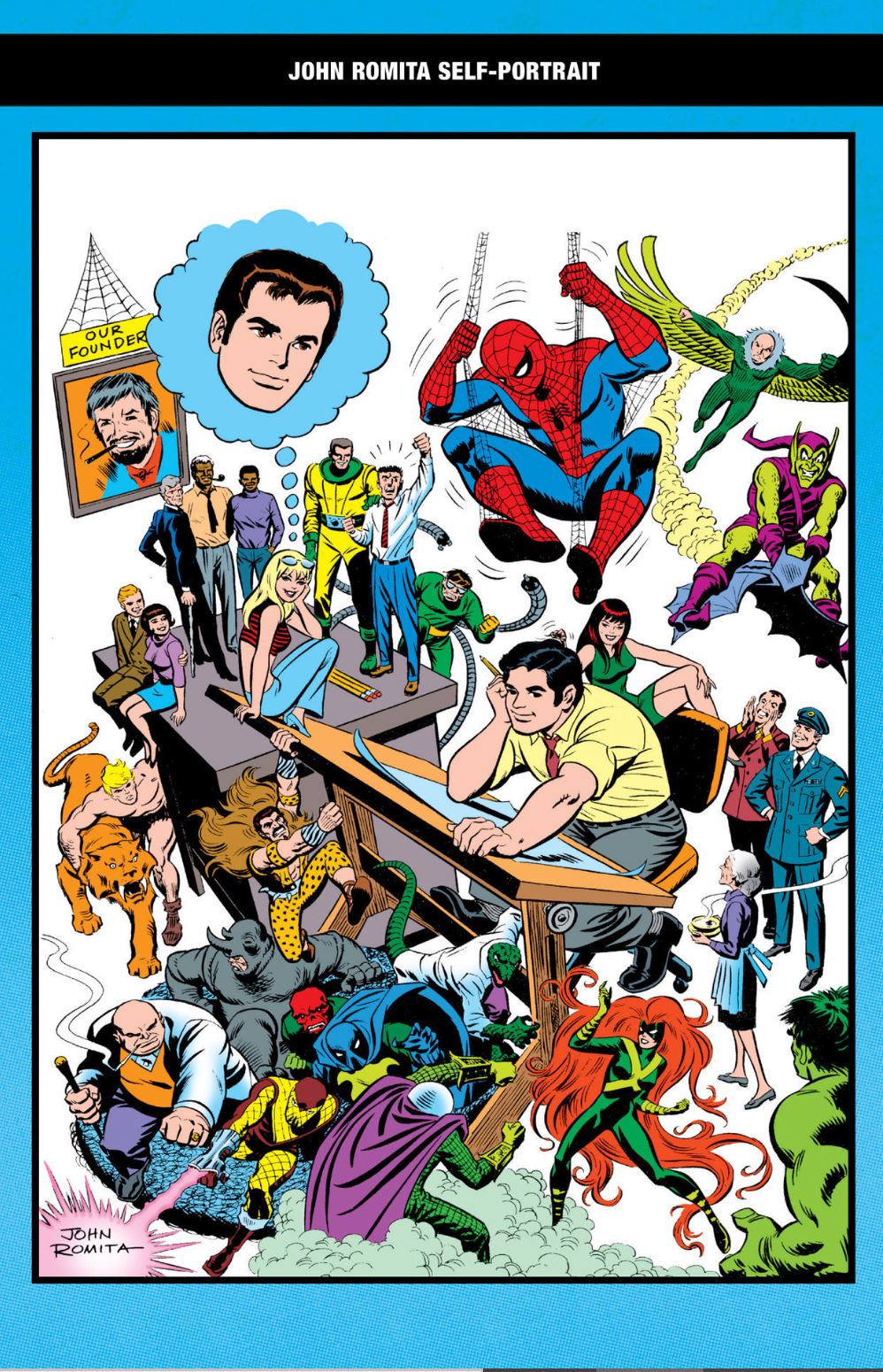
This is absolutely one of the most cohesive and satisfactory career compilations available and one no fan should miss.
© 2019 MARVEL.
For a slightly different selection, I’d advise also tracking down Marvel Masters: The art of John Romita Sr (ISBN: 978-1-84653-403-4), although that’s not available in digital formats.

